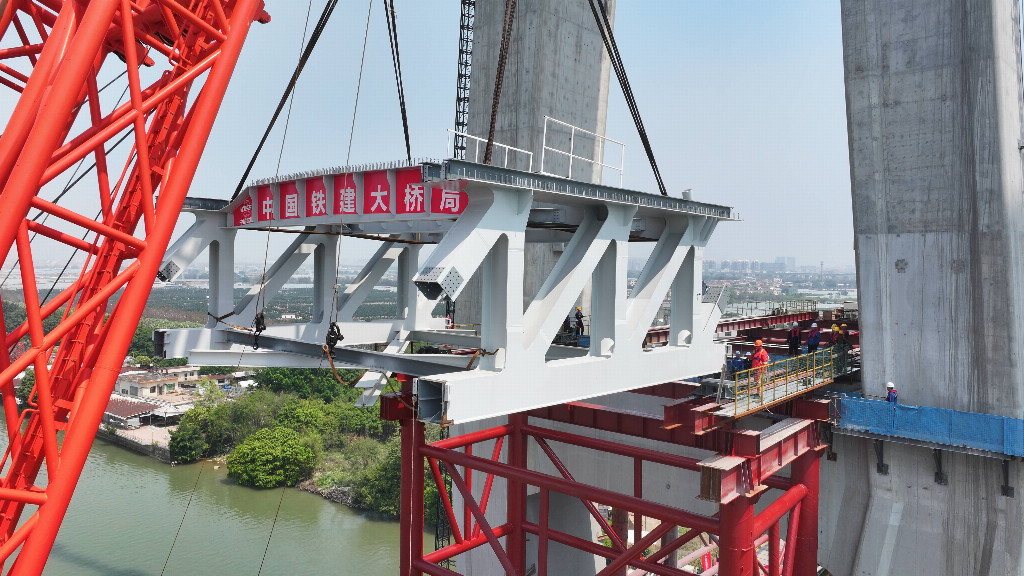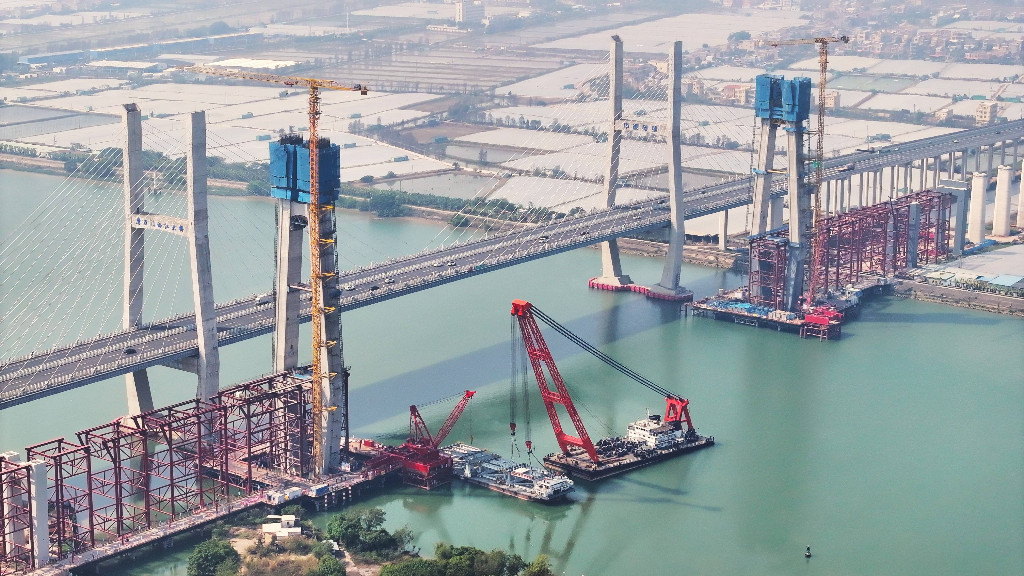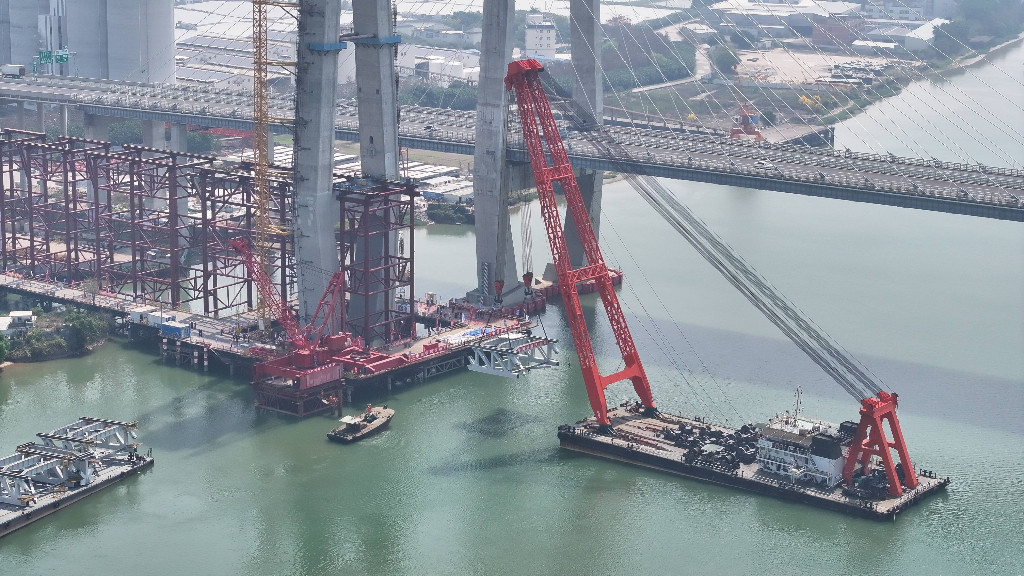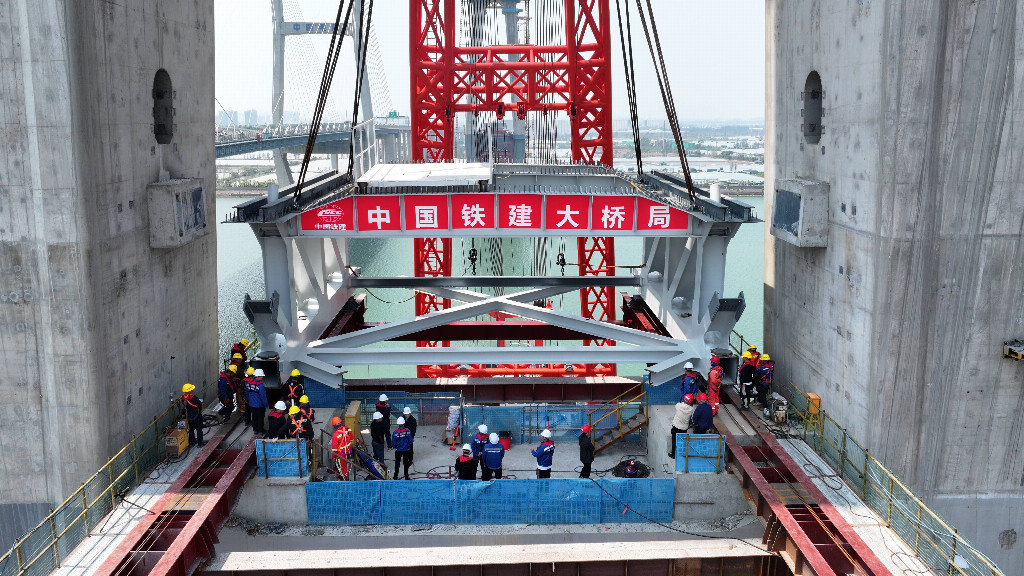March 20th, at the construction site of the Modao Gate main bridge for the Shenzhen-Jiangmen Railway Project 11 undertaken by China Railway Construction Bridge Bureau, the 80-ton GS2 first section steel truss girder was accurately positioned and erected upon the lifting commander's order, marking the official start of the steel structure erection phase for the main bridge and laying a solid foundation for achieving the opening target.


Starting from Shenzhen Xili Station, the Shenzhen-Jiangmen Railway has a main line length of 116 kilometers, crossing the Pearl River Estuary and connecting five central cities in the Greater Bay Area: Shenzhen, Dongguan, Guangzhou, Zhongshan, and Jiangmen. It is an important component of the national "eight vertical and eight horizontal" high-speed rail corridor coastal channel and also a major trans-river intercity channel in the Pearl River Delta region.

China Railway Construction Bridge Bureau is responsible for the Shenzhen-Jiangmen Railway Project 11, which has a main line length of 23.72 kilometers and a 100% bridge ratio. The main bridge is 689.8 meters long with a main span of 320 meters, crossing a Class I navigation channel. The entire bridge is divided into 65 sections. The GS2 section under construction is 14.6 meters wide and 12 meters long. It is the world's first cable-stayed bridge using a steel truss-partially encased concrete composite girder. The main bridge steel truss girder is expected to be completed by the end of 2025.

According to Xu Xianhui, the on-site technical director, "The first steel truss girder is designed with 'bolted + welded integral nodes', pre-assembled into an integral module. After transportation to the site, it needs to be lifted in one go. The construction challenges include the high-altitude handling of large pieces, safety control during navigation closure, and millimeter-level assembly accuracy requirements." In response, the project team comprehensively coordinated and carefully planned, using a safety systems analysis method to identify and evaluate risk sources, selecting experienced construction personnel to form a steel structure handling team, and comprehensively inspecting and maintaining all equipment to ensure good operating conditions; closely cooperating with maritime departments to formulate detailed navigation closure plans and safety control plans, strengthening monitoring and management of the navigation channel during navigation closure to reduce the impact of construction on the navigable environment. During the construction process, a beam-carrying ship with a carrying capacity of 1,276 tons was used for transportation, and BIM digital twin technology was employed to conduct 4D simulations of the lifting path, combined with the assistance of the Beidou positioning system and other high-tech means to ensure stable aerial lifting of the girder and achieve millimeter-level precision control, realizing lean tackling of the entire chain and ensuring the successful erection of the first steel truss girder.

Upon completion of the Shenzhen-Jiangmen Railway, Shenzhen and Jiangmen will be accessible within one hour, providing basic conditions for the complementary advantages of both sides of the Pearl River. It will enable half-hour high-speed rail connectivity between Shenzhen and the Guangzhou Nansha Free Trade Zone, promoting the cross-city flow of industrial elements, and assisting in the creation of the Guangdong-Hong Kong-Macao Greater Bay Area's half-hour life circle and economic circle. It will accelerate the construction of the "one core, one belt, one area" regional development pattern and promote coordinated development between the eastern and western regions of the Pearl River and the Pearl River Delta region. (Li Ningna)